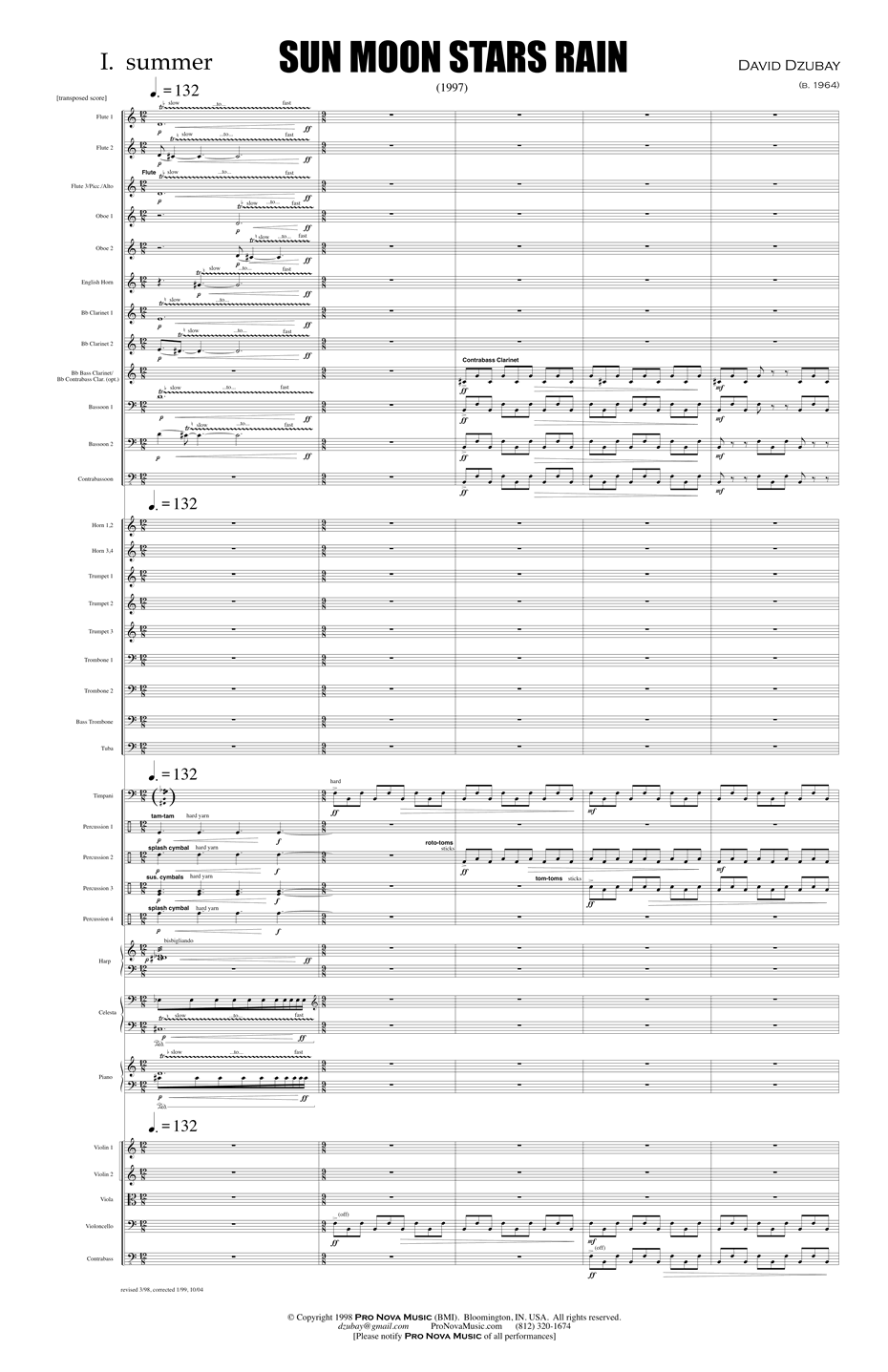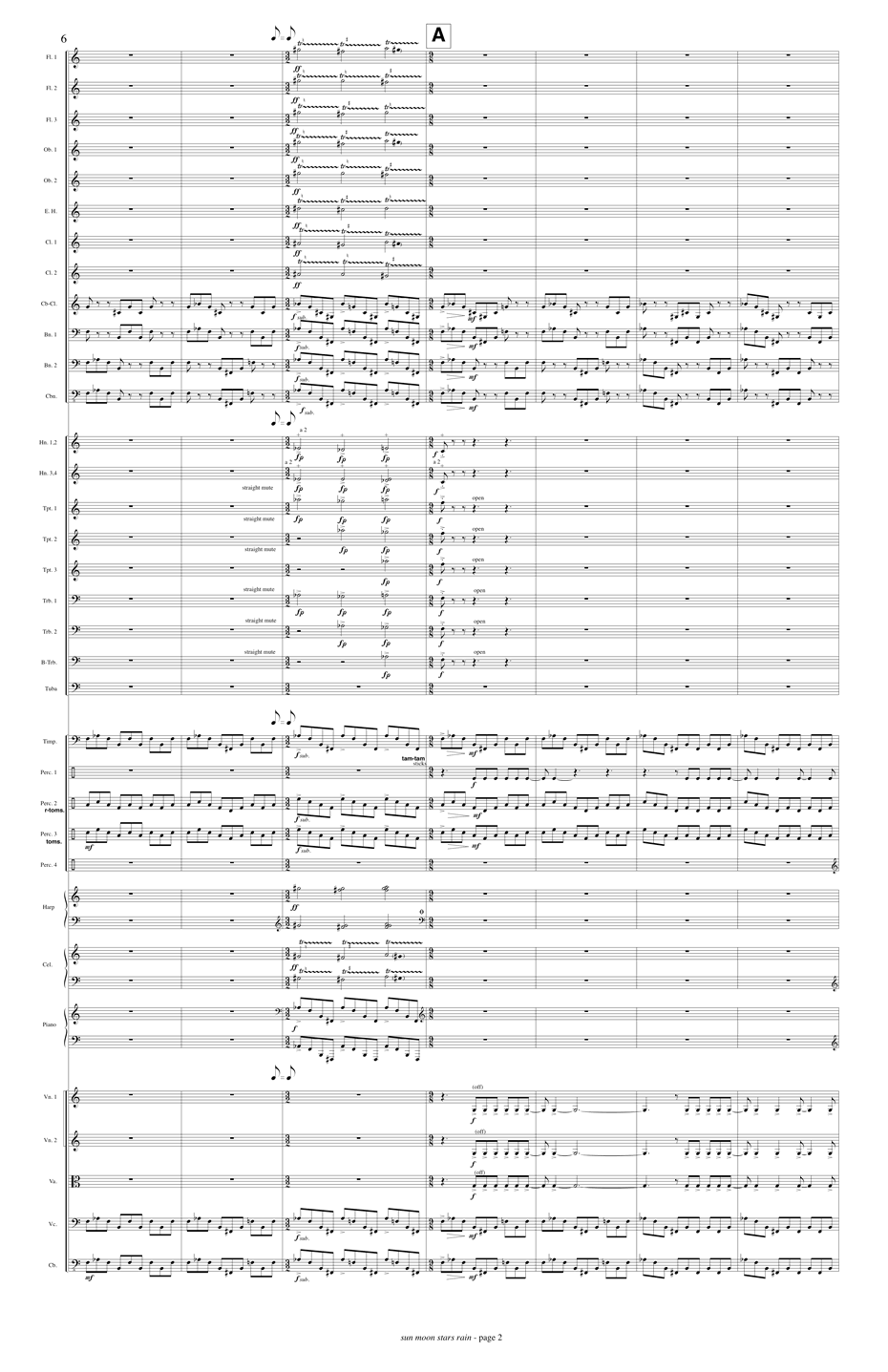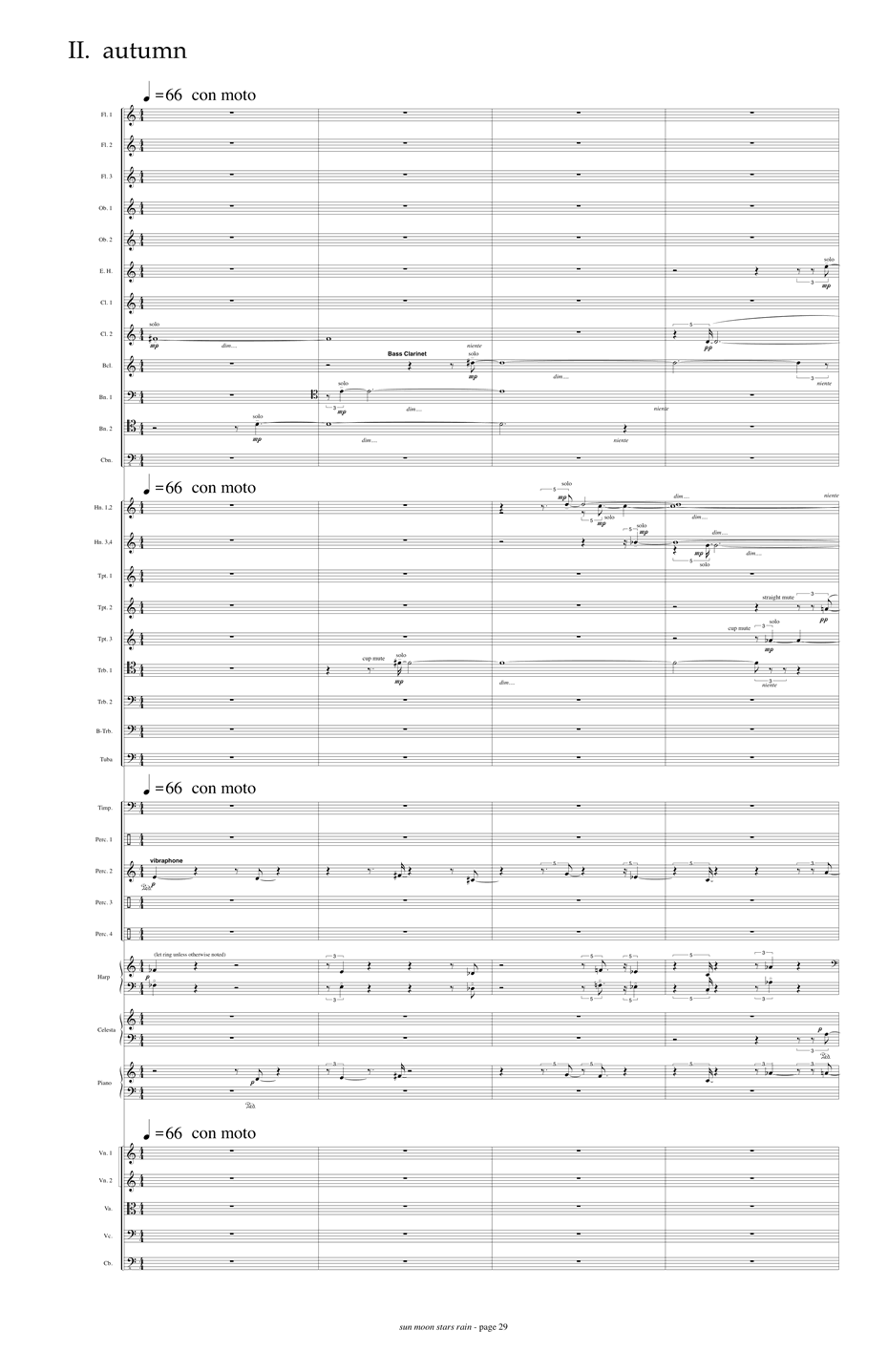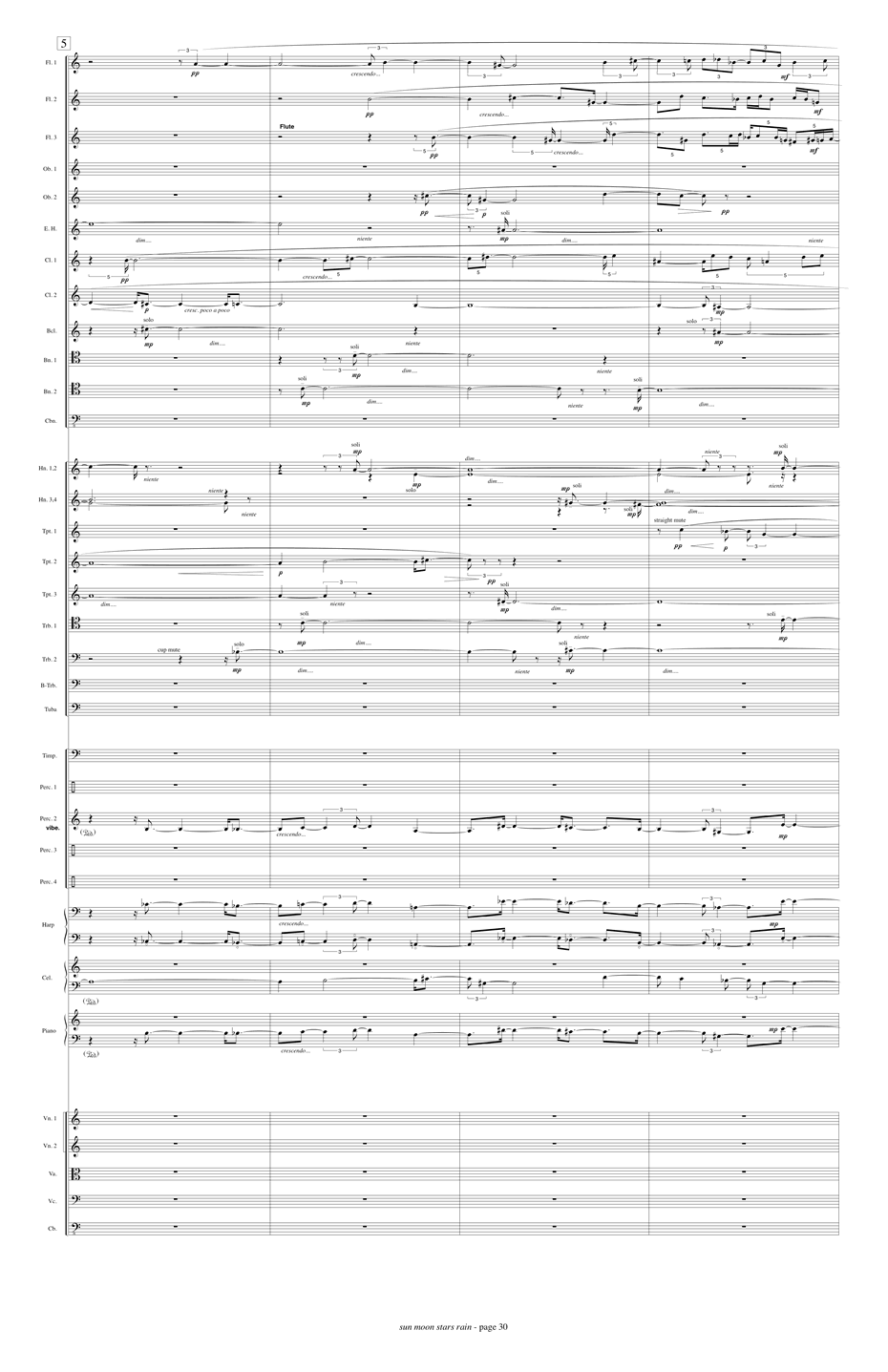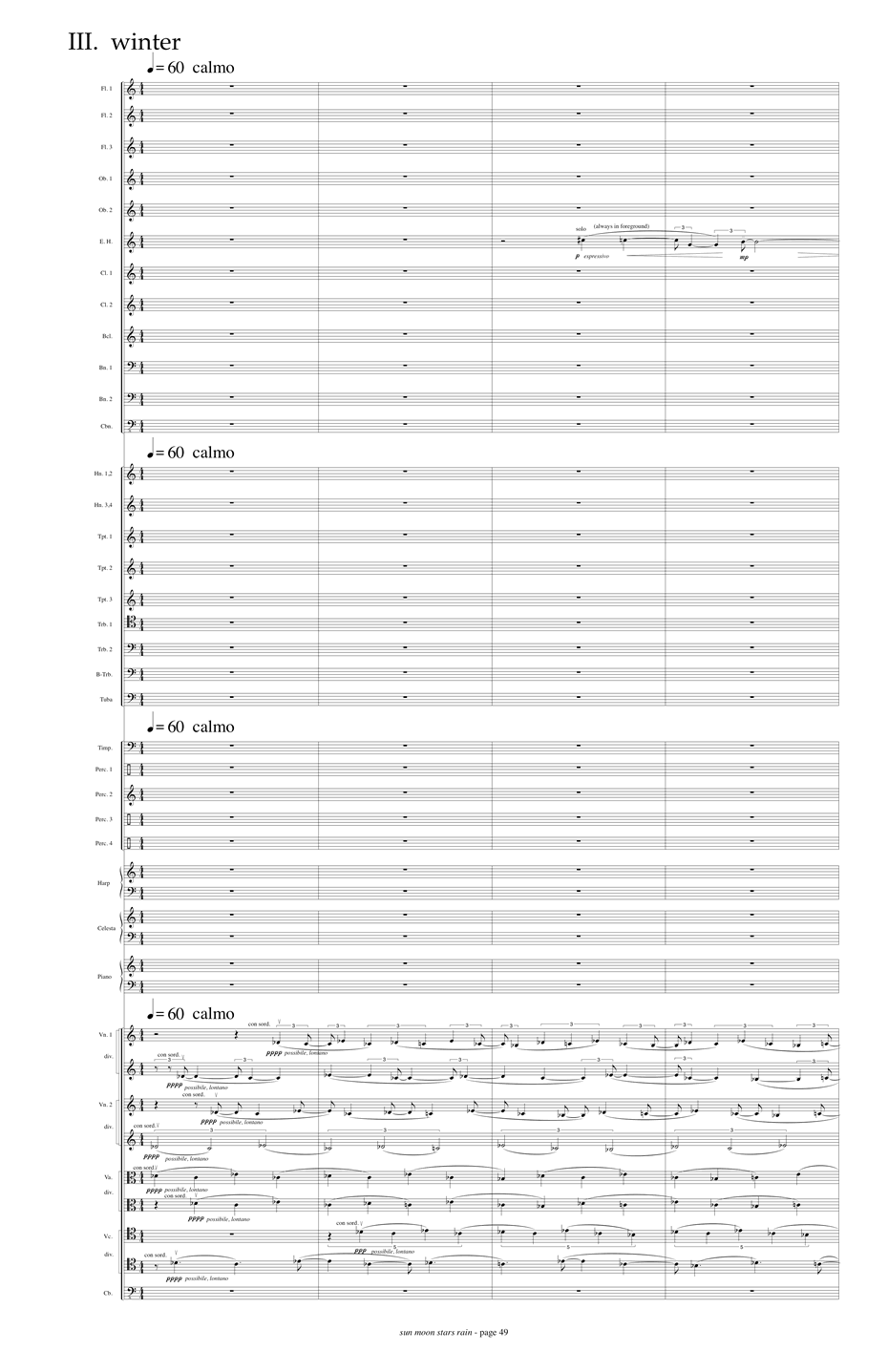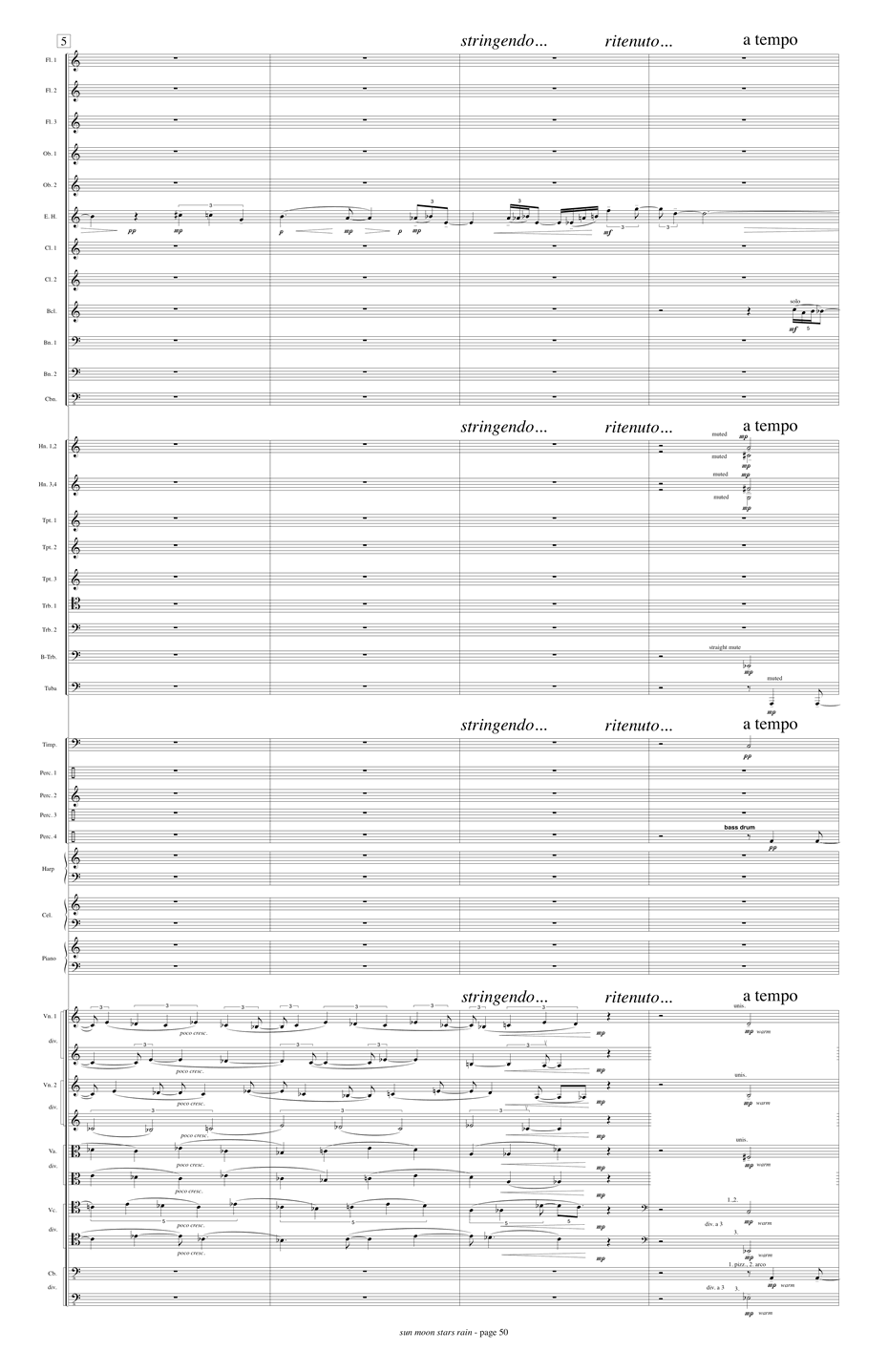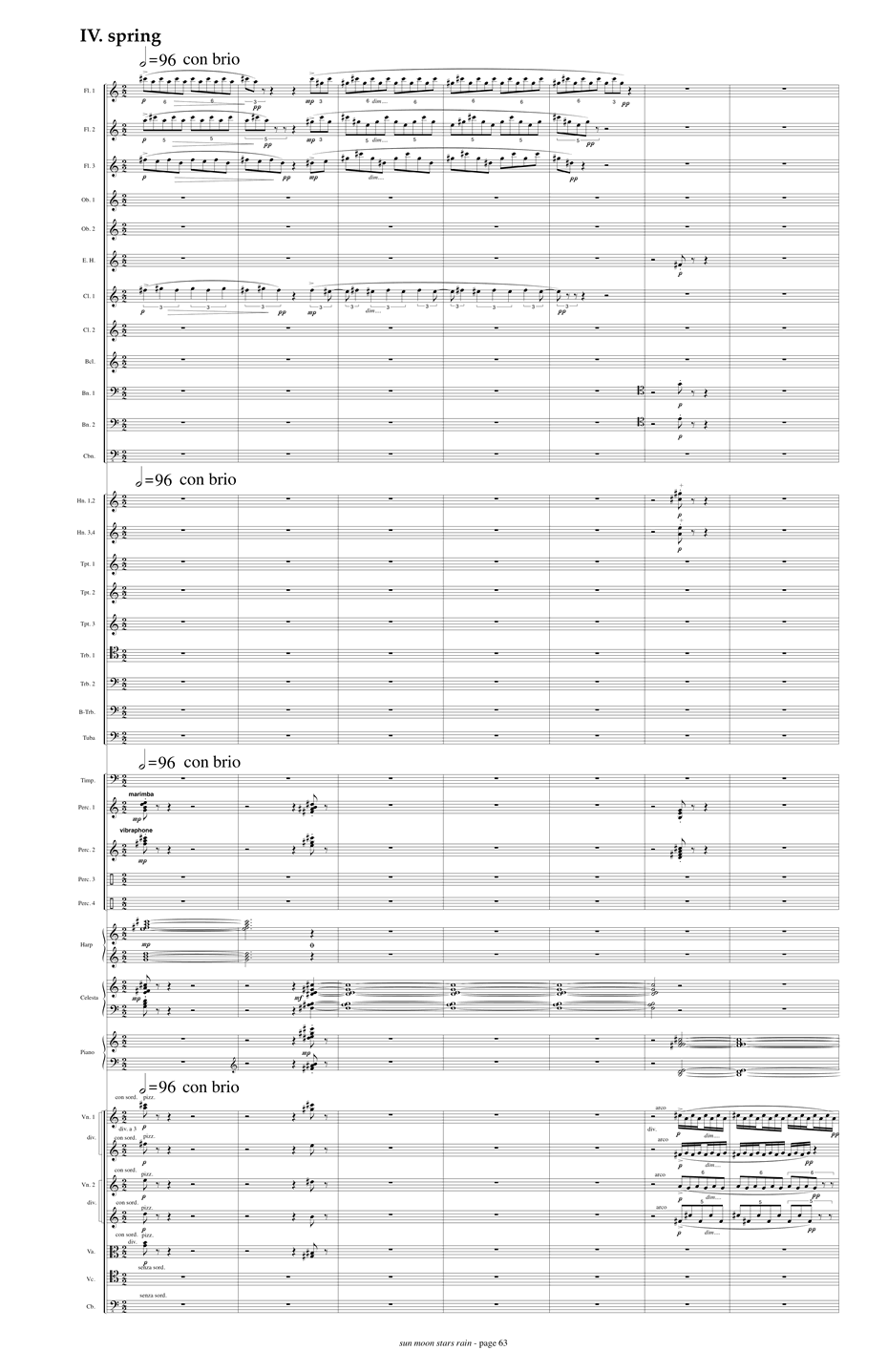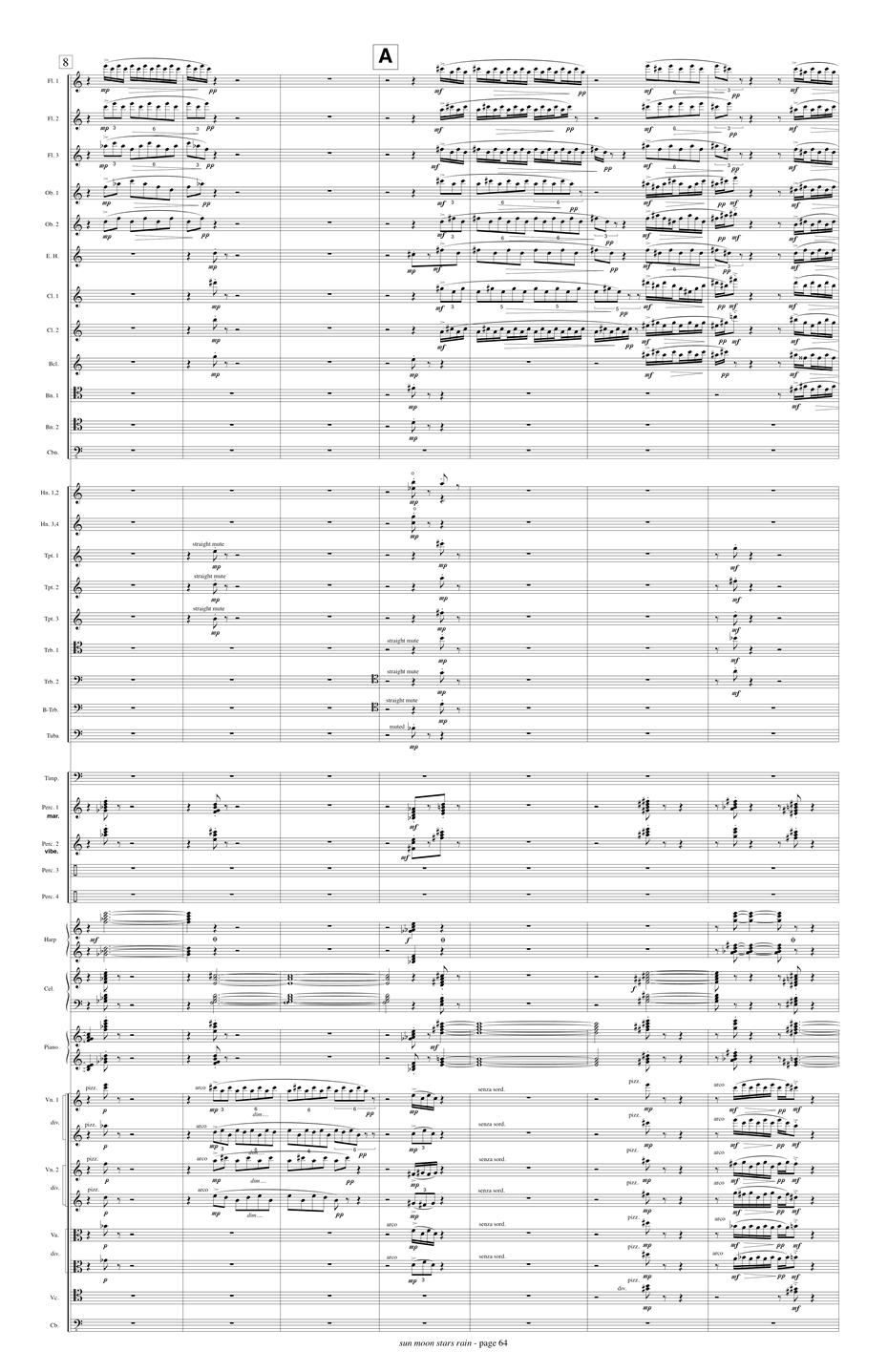sun moon stars rain
(1997) for orchestra
- summer
- autumn
- winter
- spring
instrumentation:
3(all+picc).3(3=E hn).3(3=B-cl).3(3=cbn)/4331/timp.4perc.hp.cel.pno/strings
duration: 18 minutes
premiere: Minnesota Orchestra, Eiji Oue, March 27, 1997
I. summer
IV. rain
Perusal Score
Recording
 Innova 634 American Midlife
Innova 634 American Midlife
Slovak Radio Symphony Orchestra, David Dzubay
(first mvt. only - as "Ra!")
Winner of the Barlow International Competition 1995 Commissioned by the Barlow Endowment for Music Composition at Brigham Young University.
Commissioned for a consortium of the Minnesota Orchestra, Baltimore Symphony, and the Saint Louis Symphony.
Program Note
"sun moon stars rain" and "summer autumn winter spring" are lines from a poem by e. e. cummings ("anyone lived in a pretty how town", 50 Poems, 1940). Having already decided to compose four short movements with contrasting, focused characters, the idea of writing my own 'four seasons' seemed to match that conception well, so I borrowed these lines as titles.
The movements share some elements of structure. The number 4 is very important (4 movements, 4 minutes each,...). Many of the large scale proportions, and even specific rhythms are based on the numbers 1-2-3-4, in various orders. For example, there are four major sections in each movement, with proportions of 1:2:3:4, and the order of those proportions is different in each movement.
summer is a rather aggressive depiction of some imagined ritual of sun worship. There are four ideas presented in the movement: 1) a "skin dance" featuring the timpani and other percussion, 2) a declarative, unison melodic line, 3) a layered texture of pulses, and 4) sun bursts and shines. The movement abruptly alternates between these ideas, as if following the precise dictates of a grand ceremony. At the end of the movement, the orchestra shouts out the exclamation "Ra!" - the name of the Egyptian Sun-God.
autumn is woven from a single melodic strand consisting of a 12 note melody, transposed and cycled 13.5 times (moon cycles per year), through a talea of 27 durations (days in the moon's rotation and revolution). The melodic line is rhythmically unstable, as if fluttering at the caprice of autumn winds. After a delicate opening, the movement builds toward increasingly wild flurries of activity, before subsiding. There is a certain melancholic quality to the music, as the season is one of death. This movement also pays homage to two of my favorite composers, with a fugal entry near the beginning (Bach), and a chord built up in the strings at the end which is reminiscent of the slow movement of Bartok's String Quartet No. 4. Also reminiscent of Bartok is the movement's concern for symmetry in register and structure.
winter is a quiet, still, delicate movement. Two of the orchestra's more 'earth-bound' instruments, English horn and trombone, are featured in the first and third sections, as if lonely souls gazing up at a star-filled sky, evoked in the shimmering, sparkling music of the second and fourth sections.
spring presents a few gestures associated with rain, such as thunderclaps and falling figures, but is, for the most part, concerned with growth. Small musical gestures, like cells, are repeated, varied, and expanded upon. A spiral structure, as in 1-2-1-2-3-2-1-2-3-4 etc, is used rhythmically and harmonically throughout the movement, which is the fastest and most playful of sun moon stars rain.


